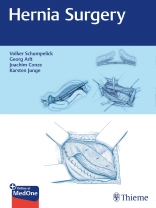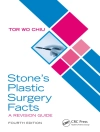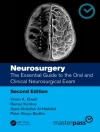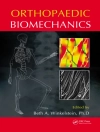<p><em><strong>All the latest trends and technical innovations for both routine and complex hernia repair</strong></em></p><p>Surgical procedures to repair hernias are among the most common procedures of all, with a history going back over 200 years. While most procedures are routine, they can be a challenge, particularly when previous surgery in the area has caused scarring that distorts the anatomy.</p><p>All currently established operative techniques are described and explained in detail in the book and illustrated, step by step, with a wealth of brilliant figures and diagrams. A detailed description of laparoscopic anatomy and preperitoneal procedures is given. Important information regarding indications and postoperative care is provided.</p><p>New surgical treatment concepts for hernia arising in the early 21st century and expounded in this book include tension-free principles, inguinal hernia repair under local anesthesia, use of the preperitoneal space, and laparoscopic hernia repair.</p><p><strong>Key Features</strong><ul><li>3D mesh and patch-and-plug procedures</li><li>Laparoscopic methods such as the single-port technique and mini-technique</li><li>New developments in open and laparoscopic surgery of incisional hernias</li><li>Special disorders such as sports hernia</li><li>Richly illustrated with hundreds of exquisite artist renderings</li></ul></p><p>Ideal for all surgeons in training, and of benefit to experienced surgeons as well, Schumpelick’s <cite>Hernia Surgery</cite> is a complete introduction to evidence-based techniques in this field.</p><p>This book includes complimentary access to a digital copy on <a href=’https://medone.thieme.com’ target=’blank’>https://medone.thieme.com.</a></p>
สารบัญ
<p><strong>1 Introduction</strong><br>1.1 Anatomy of the Anterior Abdominal Wall<br>1.2 Definition and Terminology<br>1.3 Diagnosis<br>1.4 The History of Hernia Surgery<br>1.5 Repair Principles and Materials<br>1.6 Hernia Biomechanics<br>1.7 Biological Meshes<br>1.8 Anesthesia<br>1.9 Pediatric Hernia<br><strong>2 Adult Inguinal Hernia</strong><br>2.1 Indications and Choice of Procedure<br>2.2 Open Suture Techniques<br>2.3 Open Mesh Techniques<br>2.4 Laparoscopic Techniques<br><strong>3 Special Hernias</strong><br>3.1 Female Hernias<br>3.2 Sportsman’s Groin<br>3.3 Sliding Hernia<br>3.4 Recurrent Hernia<br>3.5 Umbilical Hernia<br>3.6 Femoral Hernia<br>3.7 Rare Hernias<br>3.8 Spigelian Hernia<br>3.9 Internal Hernias<br><strong>4 Incisional Hernias</strong><br>4.1 General Principles<br>4.2 Open Technique<br>4.3 Laparoscopic Repair of Incisional Hernias<br>4.4 Abdominal Wall Tumors<br>4.5 Prevention of Incisional Hernias<br><strong>5 Complications</strong><br>5.1 Infection<br>5.2 Incarceration<br>5.3 Postoperative Pain<br>5.4 Triple Neurectomy<br><strong>6 Miscellaneous</strong><br>6.1 Training in Hernia Surgery: Hernia Compact—Young Surgery as a 3-Day Further Education Course<br>6.2 Hernia Register: Outcome Research in Hernia Surgery</p>












